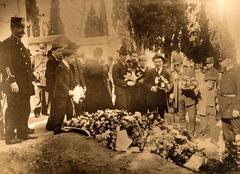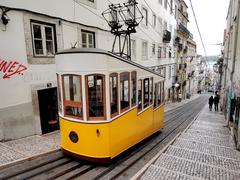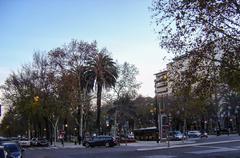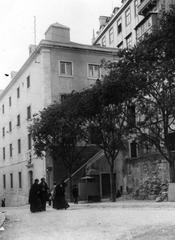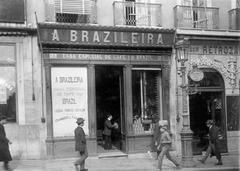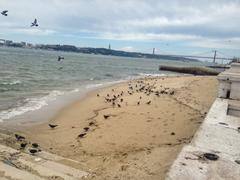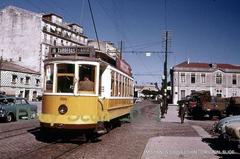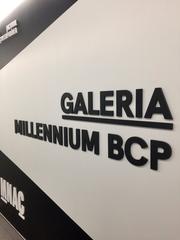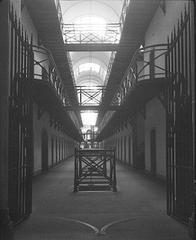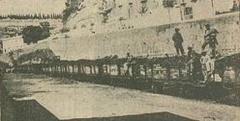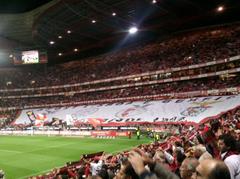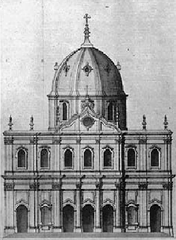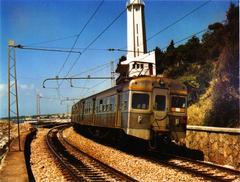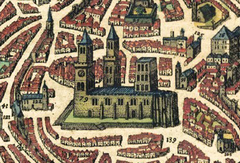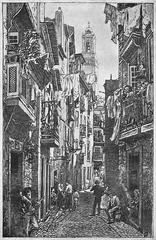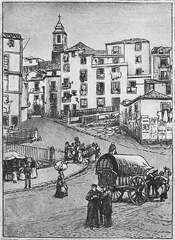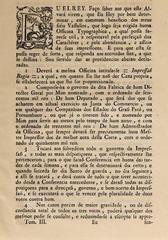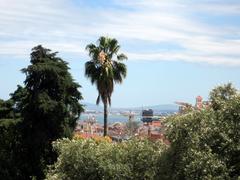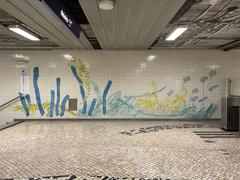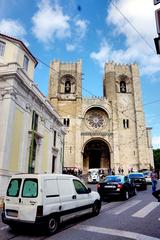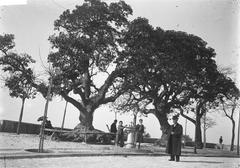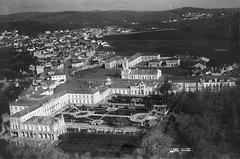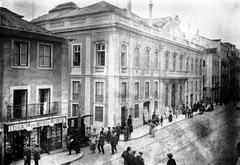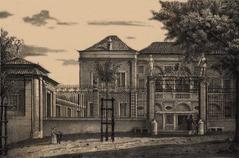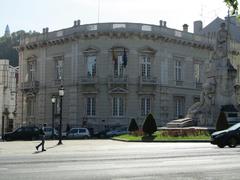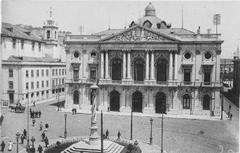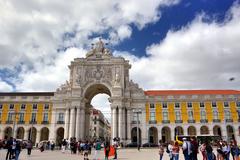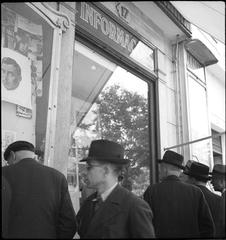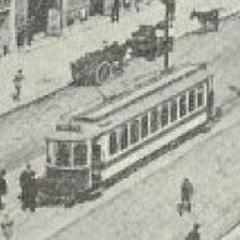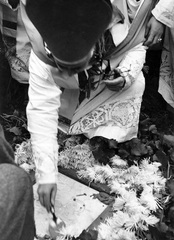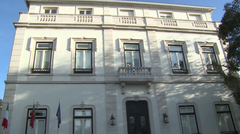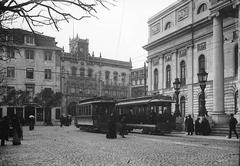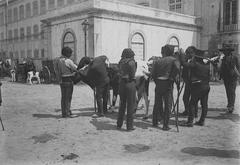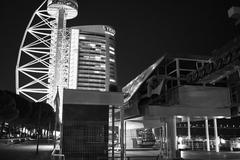Comprehensive Guide to Visiting Museu de Arte, Arquitetura e Tecnologia (MAAT), Lisbon, Portugal
Date: 17/07/2024
Introduction
The Museu de Arte, Arquitetura e Tecnologia (MAAT) in Lisbon, Portugal, is a testament to the fusion of contemporary art, architecture, and technology. Nestled along the picturesque waterfront of the Belém district, MAAT stands as a symbol of Lisbon’s cultural renaissance. Conceived as part of a broader initiative to rejuvenate this historically rich area, MAAT was envisioned as a hub of innovation and artistic expression. The museum’s striking architectural design, crafted by British architect Amanda Levete and her firm AL_A, combines traditional Portuguese materials with a modern, undulating form that reflects the dynamic flow of the Tagus River (ArchDaily). Officially opened on October 5, 2016, MAAT has since become a focal point for both local and international visitors, offering a diverse range of exhibitions that explore the intersections of art, architecture, and technology (E-Flux). The museum’s integration with the historic Central Tejo Power Station further emphasizes its commitment to bridging past and present, showcasing the evolution of technological advancements within a cultural context (EDP Foundation).
Table of Contents
- [History and Development](#history-and-developmenthistory-and-development)
- [Origins and Conceptualization](#origins-and-conceptualizationorigins-and-conceptualization)
- [Architectural Design and Construction](#architectural-design-and-constructionarchitectural-design-and-construction)
- [Integration with the Central Tejo Power Station](#integration-with-the-central-tejo-power-stationintegration-with-the-central-tejo-power-station)
- [Funding and Management](#funding-and-managementfunding-and-management)
- [Exhibitions and Programs](#exhibitions-and-programsexhibitions-and-programs)
- [Impact on the Cultural Landscape](#impact-on-the-cultural-landscapeimpact-on-the-cultural-landscape)
- [Educational and Community Engagement](#educational-and-community-engagementeducational-and-community-engagement)
- [Future Developments](#future-developmentsfuture-developments)
- [Visitor Information](#visitor-informationvisitor-information)
- [Ticket Prices](#ticket-pricesticket-prices)
- [Opening Hours](#opening-hoursopening-hours)
- [Travel Tips](#travel-tipstravel-tips)
- [Accessibility](#accessibilityaccessibility)
- [Nearby Attractions](#nearby-attractionsnearby-attractions)
- [Special Events and Guided Tours](#special-events-and-guided-toursspecial-events-and-guided-tours)
- [Conclusion](#conclusionconclusion)
- [FAQ](#faqfaq)
- [References](#referencesreferences)
History and Development
Origins and Conceptualization
The idea for MAAT was conceived as part of a broader initiative to rejuvenate the waterfront area of Belém, a district known for its historical significance and cultural landmarks. The museum was envisioned as a space that would bridge the disciplines of art, architecture, and technology, providing a platform for contemporary artistic expression and innovation.
Architectural Design and Construction
The architectural design of MAAT is one of its most striking features. The project was awarded to the British architect Amanda Levete and her firm, AL_A. The design is characterized by its undulating form and the use of traditional Portuguese materials, such as ceramic tiles. The building’s roof, which visitors can walk on, offers panoramic views of the Tagus River and the city of Lisbon. The construction of MAAT began in 2014 and was completed in 2016, with the museum officially opening to the public on October 5, 2016 (ArchDaily).
Integration with the Central Tejo Power Station
MAAT is part of a larger cultural complex that includes the Central Tejo Power Station, a historic building that dates back to the early 20th century. The power station, which was decommissioned in the 1970s, has been repurposed as a museum of electricity and industrial heritage. The integration of the new MAAT building with the old power station creates a dialogue between the past and the present, highlighting the evolution of technology and its impact on society (E-Flux).
Funding and Management
The establishment of MAAT was made possible through the support of the EDP Foundation, the cultural arm of Energias de Portugal (EDP), one of the largest energy companies in the country. The foundation provided the necessary funding for the construction and continues to manage the museum’s operations. The involvement of EDP underscores the museum’s focus on the intersection of art, architecture, and technology, aligning with the company’s commitment to innovation and sustainability (EDP Foundation).
Exhibitions and Programs
Since its opening, MAAT has hosted a diverse range of exhibitions and programs that reflect its interdisciplinary mission. The museum’s inaugural exhibition, “Utopia/Dystopia,” explored the dual themes of utopian and dystopian visions in contemporary art and architecture. Other notable exhibitions have included “Eco-Visionaries,” which addressed environmental issues through the lens of art and technology, and “The World as a Pavilion,” which examined the role of architecture in shaping public spaces (MAAT).
Impact on the Cultural Landscape
MAAT has had a significant impact on Lisbon’s cultural landscape, attracting both local and international visitors. The museum has become a key destination for those interested in contemporary art and architecture, contributing to the city’s reputation as a vibrant cultural hub. The presence of MAAT has also spurred further development in the Belém area, with new restaurants, cafes, and shops opening to cater to the influx of visitors (The Guardian).
Educational and Community Engagement
In addition to its exhibitions, MAAT places a strong emphasis on educational and community engagement. The museum offers a variety of educational programs, including workshops, lectures, and guided tours, aimed at fostering a deeper understanding of the intersections between art, architecture, and technology. These programs are designed to appeal to a wide audience, from schoolchildren to adults, and are an integral part of the museum’s mission to promote cultural and intellectual enrichment (MAAT Education).
Future Developments
Looking ahead, MAAT continues to evolve and expand its offerings. Plans for future developments include the introduction of new exhibition spaces, the enhancement of existing facilities, and the launch of innovative programs that leverage emerging technologies. The museum’s commitment to sustainability is also reflected in its ongoing efforts to reduce its environmental footprint and promote eco-friendly practices (MAAT Sustainability).
Visitor Information
Ticket Prices
MAAT offers a range of ticket options to accommodate different visitor preferences. General admission tickets are available for €9, with discounts for seniors, students, and children. There are also combination tickets that include entry to both MAAT and the Central Tejo Power Station. Visitors can purchase tickets online or at the museum’s ticket office (MAAT Tickets).
Opening Hours
MAAT is open to visitors from 11 AM to 7 PM, Monday to Friday, and from 11 AM to 8 PM on weekends and holidays. The museum is closed on Tuesdays, as well as on January 1st, May 1st, and December 25th (MAAT Hours).
Travel Tips
For those planning to visit MAAT, it’s recommended to allocate at least 2-3 hours to fully explore the museum and its exhibitions. The museum is easily accessible by public transportation, with several bus and tram lines serving the Belém district. Parking is also available nearby for those traveling by car. Don’t forget to bring a camera, as there are plenty of photo-worthy spots around the museum.
Accessibility
MAAT is committed to providing an inclusive experience for all visitors. The museum is fully accessible, with ramps and elevators available for those with mobility impairments. There are also tactile tours and sign language interpretation services available upon request (MAAT Accessibility).
Nearby Attractions
Belém is home to several other notable attractions that visitors can explore in addition to MAAT. These include the Jerónimos Monastery, the Belém Tower, and the Monument to the Discoveries. The area is also known for its delicious pastéis de nata (custard tarts), which can be enjoyed at the famous Pastéis de Belém bakery.
Special Events and Guided Tours
MAAT offers a variety of special events and guided tours throughout the year. These include artist talks, panel discussions, and hands-on workshops. Guided tours are available in multiple languages and provide deeper insights into the museum’s exhibitions and architecture. Check the museum’s website for the latest schedule and to book your spot in advance (MAAT Events).
Conclusion
The history and development of MAAT are a testament to the transformative power of art, architecture, and technology. From its conceptualization and architectural design to its integration with the historic Central Tejo Power Station, MAAT represents a bold vision for the future of cultural institutions. Through its diverse exhibitions, educational programs, and community engagement initiatives, the museum continues to inspire and challenge visitors, making it a must-visit destination in Lisbon (MAAT). The museum’s commitment to sustainability and innovation is evident not only in its architectural design but also in its ongoing efforts to reduce its environmental footprint and promote eco-friendly practices (MAAT Sustainability). As MAAT continues to evolve, it remains dedicated to providing an inclusive and enriching experience for all visitors, ensuring its place as a must-visit destination in Lisbon. Whether you are drawn by the stunning architecture, the thought-provoking exhibitions, or the panoramic views of the Tagus River, a visit to MAAT promises an unforgettable journey through the realms of art, architecture, and technology.
FAQ
Q1 - What are the visiting hours for MAAT?
A1 - MAAT is open from 11 AM to 7 PM, Monday to Friday, and from 11 AM to 8 PM on weekends and holidays. The museum is closed on Tuesdays.
Q2 - How much do tickets cost?
A2 - General admission tickets are €9, with discounts for seniors, students, and children. Combination tickets for MAAT and the Central Tejo Power Station are also available.
Q3 - Is MAAT accessible for visitors with disabilities?
A3 - Yes, MAAT is fully accessible, with ramps, elevators, tactile tours, and sign language interpretation services available upon request.
Q4 - Are there guided tours available at MAAT?
A4 - Yes, MAAT offers guided tours in multiple languages. Check the museum’s website for the latest schedule and booking information.
References
- ArchDaily. (2017). MAAT Museum / AL_A. Retrieved from ArchDaily
- E-Flux. (2017). MAAT Museum of Art, Architecture and Technology. Retrieved from E-Flux
- EDP Foundation. (n.d.). Retrieved from EDP Foundation
- MAAT. (n.d.). Retrieved from MAAT
- MAAT Learning. (n.d.). Retrieved from MAAT Learning
- Lisbon Stories. (n.d.). Retrieved from Lisbon Stories
- AL_A MAAT. (n.d.). Retrieved from AL_A MAAT
- MAAT Eco-Visionaries. (n.d.). Retrieved from MAAT Eco-Visionaries
- MAAT Collaborations. (n.d.). Retrieved from MAAT Collaborations
- MAAT Accessibility. (n.d.). Retrieved from MAAT Accessibility
- MAAT Sustainability. (n.d.). Retrieved from MAAT Sustainability

